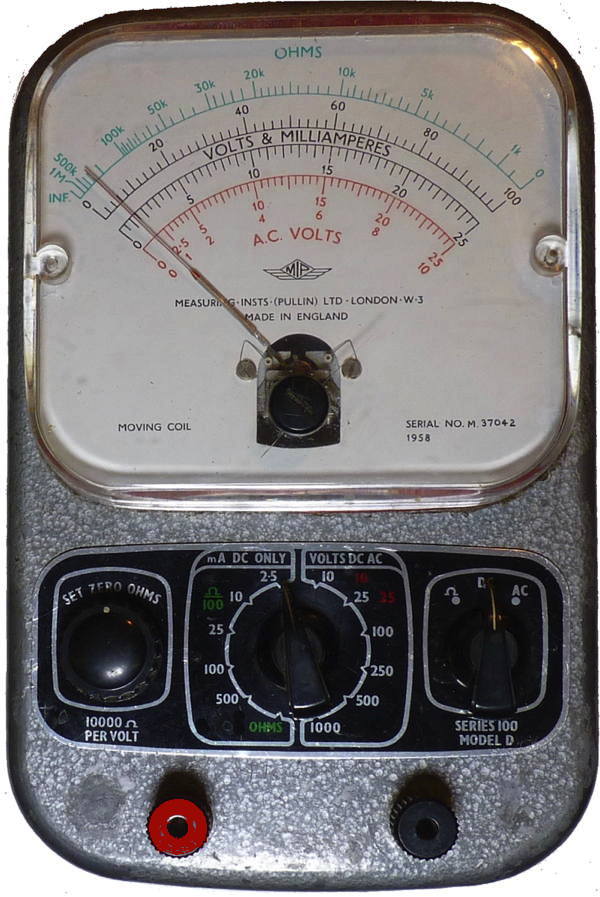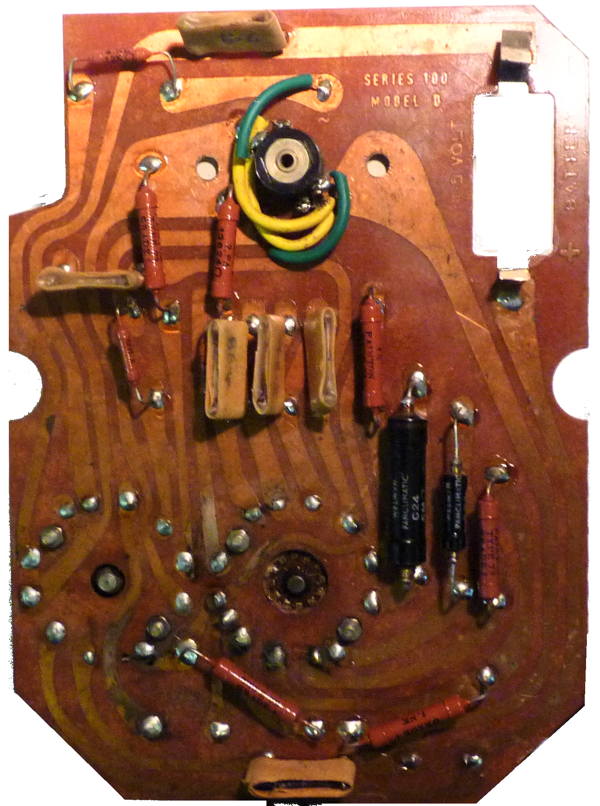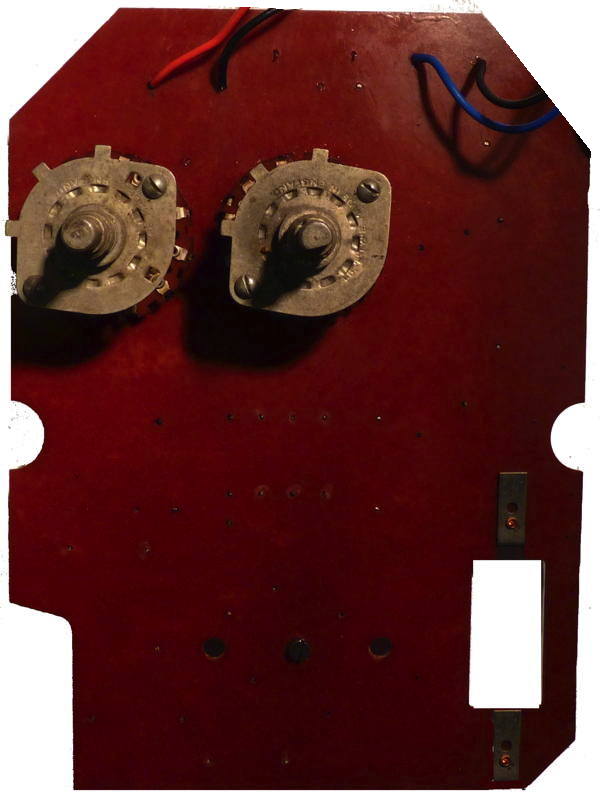Measuring Instruments (Pullin)
Series 100 model D Portable test set Serial No M 37042
and earlier model
Series 100 Multi Range test set Serial No J 4367


Measuring Instruments (Pullin) Ltd moving coil 10,000 ohms/volt multimeter in hammer grey die cast metal case, Working. Measuring Instruments (Pullin) ltd, Electrin Works, Winchester Street, Acton , London W3.UK. 1958.
Voltage AC and DC ranges 10, 25, 100, 250, 500, 1000 Volts
Current DC only ranges 2.5, 10, 25, 100, 500 Milli amps
Resistance ranges 0-10,000 ohms and 0-1
Megohm (With internal 1.5 Volt cell)
This meter was given to me by Peter Bates whose late father was a radio and TV engineer in the 50’s and 60’s and he regularly used this multimeter, amongst others. After his passing, he and his mother were clearing out his old tools and on seeing this he just had to bring it home. He felt that as he had no use for it and although it brought back fond memories from his childhood with his Dad, he wanted to sell it or pass it to a collector who might have a use for it, even if just for spares.
As can be seen from the picture below it
was in rather a sorry state and had clearly seen a great deal of
service. Before doing anything else I tested the meter on the voltage
ranges with a 9 Volt battery and got deflections on all DC and AC
ranges. So I thought it would be worth tidying it up. After removing
the circuit board, the alien red socket adjacent to the ohms adjuster,
washing the outside and removing corrosion from the interior I filled
the hole and the two smaller ones with two part epoxy mixed with a very
small amount of aluminium primer paint. As I did not have a socket to
match the negative one I decided to use a pair of terminals which could
fit in the holes without further modification. The chipped paint on the
scale plate was touched up with paint from a tile grouting pen which
dries very quickly. I found that although the pointer could be
set to zero when the meter was horizontal it moved upwards when
vertical
or at an angle when supported on its fold out stand (see main picture).
I found that the balance weight which comprises a several turns of fine
wire was secured by what appears to be shellac and by warming with a
soldering iron and manipulating with a scalpel it was possible to
improve the balance of the pointer so that it remained zeroed in both
positions. Initially I found that the meter was reading consistently
low but when I disconnected the meter rectifier the situation improved
markedly. I then replaced this with four 0A47 germanium diodes and it
now works fairly well, the main problem seems to be with the build up
of static on the meter face which tends to cause erratic indications.
Rear of the printed circuit board, the instrument as received and a model 100 for comparison
I was given this model 100 by Susan Mc Fayden which belonged to her father. He was a radio enthusiast who owned an Eddystone receiver, and worked as a production engineer at Welwyn Electrical at Bedlington (manufacturing resistors etc). It looks in excellent order and came complete with test leads but unfortunately the meter movement is open circuit. This one is dated 1954.
Descriptive
leaflet with description and specification PDF


The following advertisement from 1960 shows some of this manufacturers products including the model 100 Portable test set which had been first made in the late 1940s. It would seem that the specification of the model 100 and the 100D are identical and it seems that both variations were available and the D stands for instruments with the new "DIAKON CONTOUR COVER" meter movements.

I have another instrument made by this
firm see here



